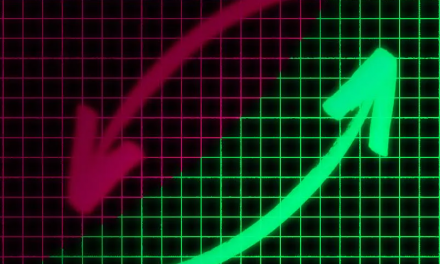Bitcoin’s Valiant Effort to Surpass $27,000 Interrupted Amidst Shifting Markets
In the early hours of Wednesday, the trajectory of Bitcoin (BTC) seemed promising, poised to surpass the $27,000 benchmark. However, this momentum experienced a hiccup parallel to a rejuvenated decline in the U.S. stock market. By mid-afternoon, pivotal indexes such as the S&P 500 and Nasdaq depicted roughly 0.6% depreciations. While these declines might appear inconsequential in isolation, they echo a more daunting 10% descent since the commencement of August.
Presently, Bitcoin hovers just below $26,200, depicting a stable stance over the last 24 hours, despite its earlier elevation above $26,800. Subsequently, the CoinDesk Market Index (CMI) experienced a 0.15% appreciation.
Breaking Conventional Financial Paradigms
Interestingly, the continuous escalation of interest rates traditionally imposes pressure on Bitcoin prices. However, experts contend that the conventional dynamics between Bitcoin and interest rates are experiencing a transformation. Some propose optimistic narratives for Bitcoin, emphasizing its technical attributes. Mark Yusko, the Chief Investment Officer of Morgan Creek Capital Management, during a CoinDesk TV segment, illuminated the significance of the forthcoming Bitcoin halving event, a quadrennial phenomenon. He illustrated this event as a transitional phase for Bitcoin, anticipating a gradual return to its fair value post this event. “That’s the parabolic time when people go crazy and buy with leverage,” he mentioned.
The market’s descent coincides with a nine-basis-point surge in the 10-year Treasury yield, marking a pinnacle unseen in 16 years at 4.63%. This rise parallels an elevation in oil prices, breaching new heights in 2023 at $93.53 per barrel, provoking conversations around “stagflation” – a term encapsulating slow economic growth coupled with rapid inflation, reminiscent of the 1970s scenarios.
Reflecting the heightened financial tensions, a survey by the Wall Street Journal disclosed modifications in the financial strategies of U.S. Chief Financial Officers (CFOs), with 41% contemplating reductions in capital spending and 42% deliberating cutbacks in operational costs. Comparatively, a preceding survey in the final quarter of 2022 indicated lesser proportions of CFOs considering such financial adjustments.
ETFs: A Waiting Game
In the realm of Exchange-Traded Funds (ETFs), anticipations remain tempered. The Securities and Exchange Commission (SEC) unveiled additional deferments on decisions regarding spot ether ETFs propositions from notable entities such as ARK Invest and VanEck, extending the suspense surrounding the approval of spot Bitcoin ETFs.
In sum, the fluctuating financial terrains, marked by oscillating interest rates, stock market movements, and imminent Bitcoin events, weave a complex tapestry of economic interactions and possibilities, with investors and financial experts meticulously navigating this intricate financial landscape.





